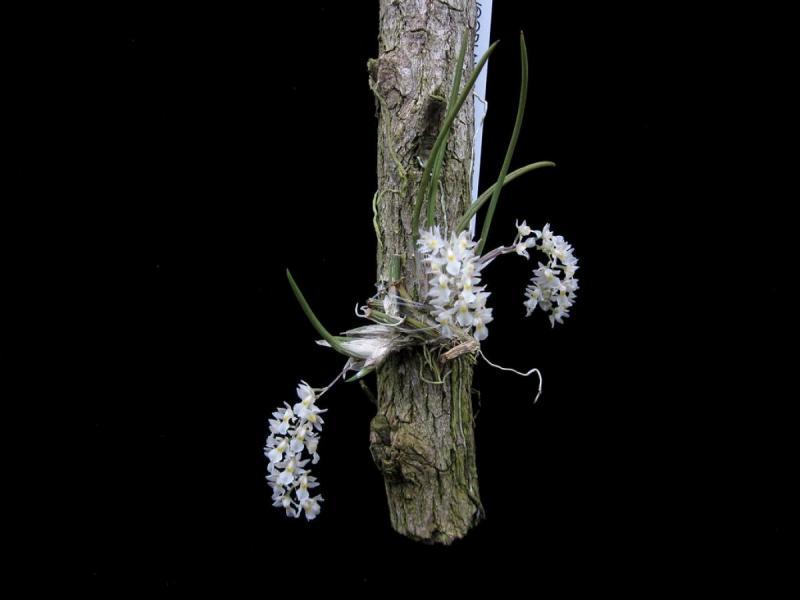Capanemia superflua
Also known as: The Rich or Rodriguezia juergensiana Rodriguezia uliginosa Rodriguezia anomala Capanemia juergensiana Capanemia uliginosa Oncidium superfluum in the subfamily: Epidendroideae
Native to: Argentina Brazil
General Information
The Rich is a small sympodial cool to warm growing epiphytic orchid belonging to the sub family Epidendroideae native to Argentina and Brazil.
Plant Description
Sympodial. Grows to 6.5-13cm. Each new growth has a single arching terete shaped leaf that grows to 5-10cm long. Pseudobulbs grow to 1.5-3cm
Flowers
Numerous long lasting blossoms appear
Substrate(s)
- Charcoal
- Treefern
- Spaghnum Moss
- Perlite
Care Notes
These orchids have a fine root system that can quickly die back if left dry for too long, but also does not like to be kept wet, so water regularly but ensure that the mix is dry before watering.
Climate
These orchids thrive in cool, conditions with good airflow. When cultivated they will thrive in a cool, sheltered environment such as a shaded greenhouse, or if grown in cooler climates they can be grown in the garden in areas where they are protected from frost and receive shade throughout the year, though they may be able to tolerate some morning sun during winter.
Grows at low to high elevations. Rainfall ranges from 64mm to 175mm per day, heaviest in July and lightest in January. Humidity ranges from 80% to 84%, highest in December and lowest in February. Temperature ranges from 8C to 28C, highest in July (17C to 28C) and lowest in January (8C to 19C).Watering
These orchids are sensitive to excessive watering and should only be watered when they look thirsty. Water infrequently and ensure that the roots are dry before watering. Keep an eye on them especially during hot weather as overwatering can lead to rot, whereas underwatering may result in wilting or shriveling, which while unattractive, will not kill the plant.
Fertiliser
Apply liquid based fertiliser per recommended directions. They can benefit from a high phosphate fertiliser leading up to flowering season, followed by a high nitrogen fertiliser when new growth appears, and a balanced fertiliser in other times. These orchids can also tolerate slow release fertiliser applied 1-2 pellets per cup (250ml) of media.
Use balanced fertiliser during Spring and Summer. Apply fertiliser regularly at half strength year round. Use a high Nitrogen fertiliser during Spring and Summer. Use a high Phosphorous fertiliser during Summer. Reduce fertiliser when plant is dormant.Potting
These plants are quite forgiving and will do well repotted ever 2-3 years. The mix should be coarse, well draining, and allow space for air to move and for roots to grow.
Alternatively, these plants will also do well mounted to tree fern or cork slabs, or mounted to trees.
Best time for repotting or mounting the orchids is the end of winter when new growths start to appear. Avoid repotting during hot weather,
This plant does well mounted. Repotting is best done annually.







